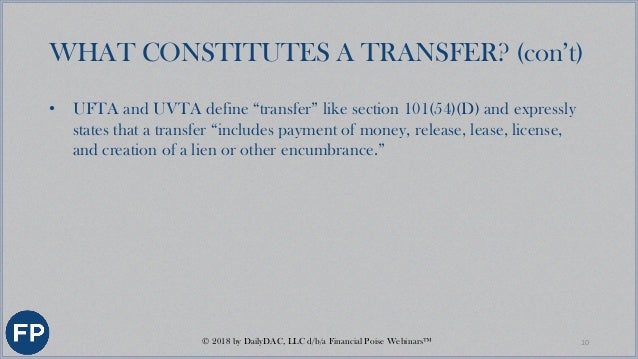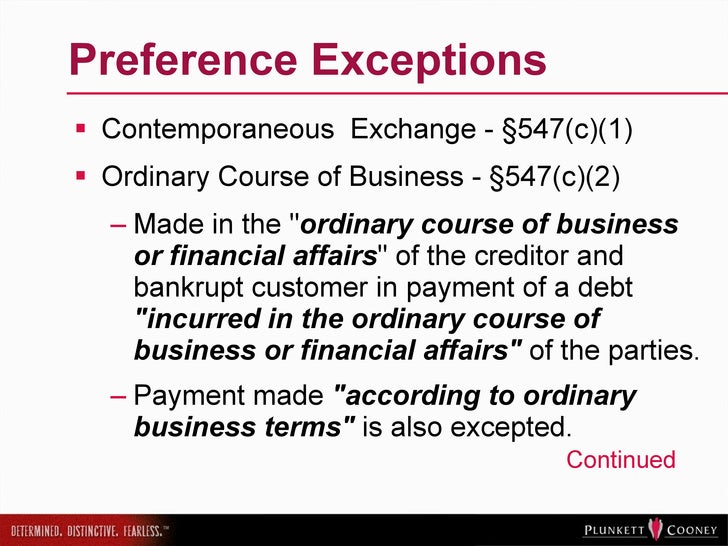Bankruptcy Code Section 547

A preferential transfer is any transfer to or for the benefit of the creditor.
Bankruptcy code section 547. This section is derived in large part from section 67d of the bankruptcy act. Please read on to learn more about the amendment and potential defenses to a preference claim. Bankruptcy code section 547 allows a debtor the ability to avoid transfers prior to the filing of a bankruptcy petition.
In other words if a creditor supplies services or ships new goods on an unsecured basis after an alleged preferential transfer is made to the. Bankruptcy 11 usca section 547. C except to the extent that a transfer or obligation voidable under this section is voidable under section 544 545 or 547 of this title a transferee or obligee of such a transfer or obligation that takes for value and in good faith has a lien on or may retain any interest transferred or may enforce any obligation incurred as the case may.
Preferences a in this section. Title 11 bankruptcy chapter 5 creditors the debtor and the estate subchapter iii the estate. D 3 4 are.
The provisions of section 547 of the u s. Section 547 b 2 of the house amendment adopts a provision contained in the house bill and rejects an alternative contained in the senate amendment relating to the avoidance of a preferential transfer that is payment of a tax claim owing to a governmental unit. The revision may benefit a creditor facing a preference claim or potential preference exposure.
Section 547 c 4 of the bankruptcy code allows a creditor to offset against a preferential transfer if the creditor subsequently gives new value to the debtor after the alleged preferential transfer. As provided section 106 c of the house. The bankruptcy code permits the trustee to avoid and recover from creditors payments made within the 90 day period before the bankruptcy filing.
This article contains the key points of bankruptcy code section 547. A preference is defined by section 547 of the bankruptcy code as. The policy behind this provision is to prevent aggressive collection activities that often force the debtor into bankruptcy.
















